Ask An Expert: What To Wear For Shoulder Season Riding
Posted by Steve on 10/22/21
Last modified: 11/01/21

Autumn and spring — also known as the “shoulder seasons” — are notoriously difficult to dress for. As the heat of summer shifts to the cold of winter and vice versa, riders are faced with wild weather patterns that can go from cold to wet to windy to warm all in the same ride. If you want to extend your riding season into these unpredictable months, it’s essential to be prepared.
45NRTH Product Manager Laura DuSchane is here to help you with that. Read on for her advice on what (and what not) to wear as the weather cools down.
Tell us a little bit about yourself.
Laura: I am a senior product manager overseeing the footwear, apparel, and soft goods for 45NRTH. With a history of product management in the outdoor industry (and living in snowy Minnesota), 45NRTH is the perfect place for me to make “work” that much more fun. Staying active all year round is important to me and there is so much to explore on our bikes, even in the snow and when the temperatures dip below freezing! 45NRTH makes it possible to get out and enjoy the outdoors, no matter the temperature outside. We’ve made it so that there really are no excuses not to get out and have fun.
What makes riding in the shoulder seasons so unique?
Laura: Riding in the shoulder seasons comes with a wealth of variables including your location, weather, and type of ride. That is why we have a range of footwear, apparel, gloves, and headwear that allows you to customize your gear for where and how you’re riding. The thread that weaves all of our pieces together is that our gear will keep you comfortable, whether it’s through Merino wool, waterproof-construction footwear, or wind-resistant shells. You get to pick what works best for you.
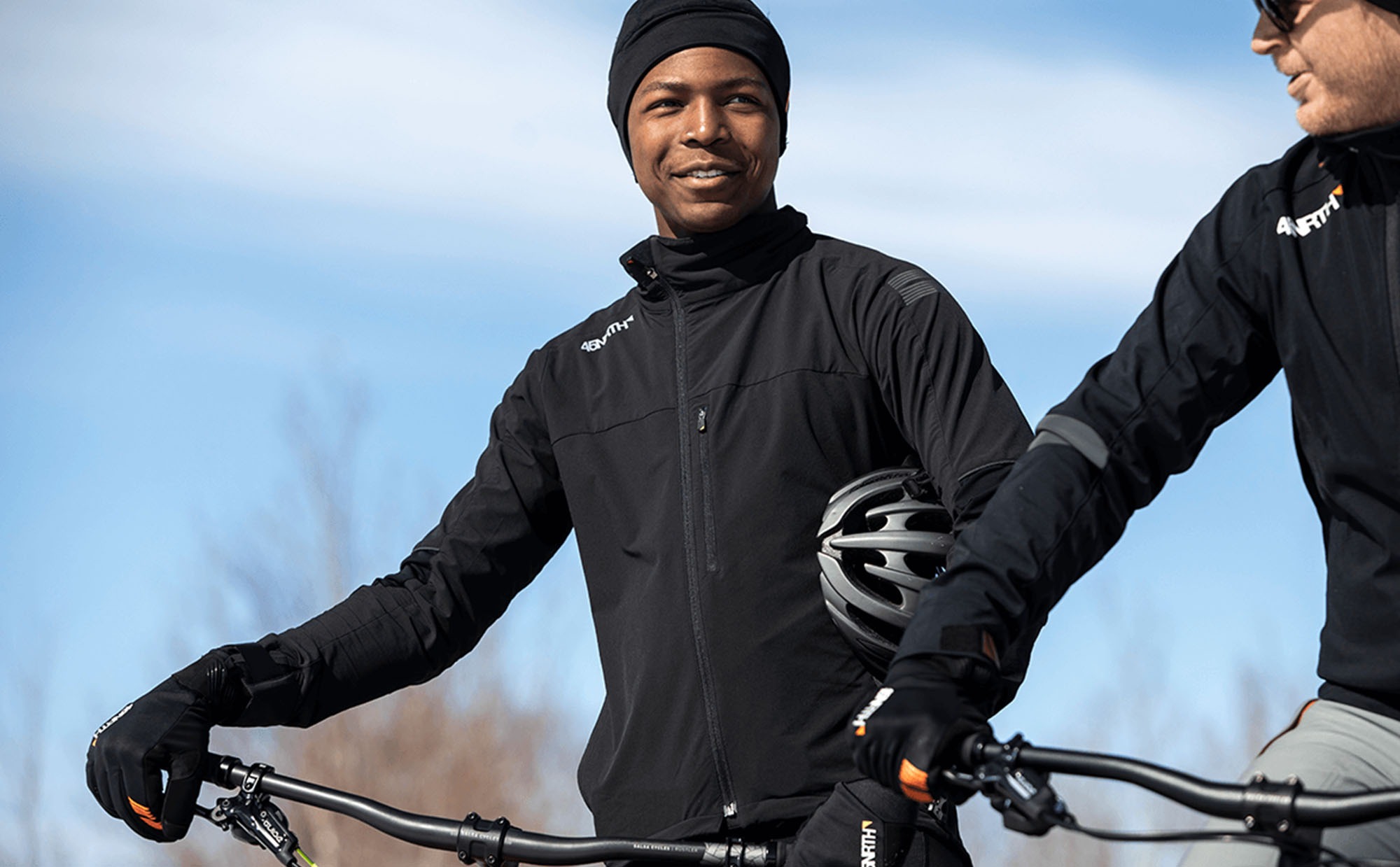
Can you tell us a little bit more about your design process? What challenges do you have to consider when designing shoulder-season apparel?
Laura: Our design process always starts with asking ourselves what problems we can solve for riders. We listen to consumer feedback, chat with bike shops, and of course, consider our own team’s experiences to bring products to market that extend the riding season.
The challenge with shoulder-season gear is that we don’t always know how long shoulder seasons will last! Winter can come early or late; spring can show up on time or not peek out until May. To tackle that challenge, we look to have versatile pieces that can be worn alone in the shoulder seasons and layered up with complementary products in the winter so you can wear the shoulder-season gear when the temperature is well below freezing.
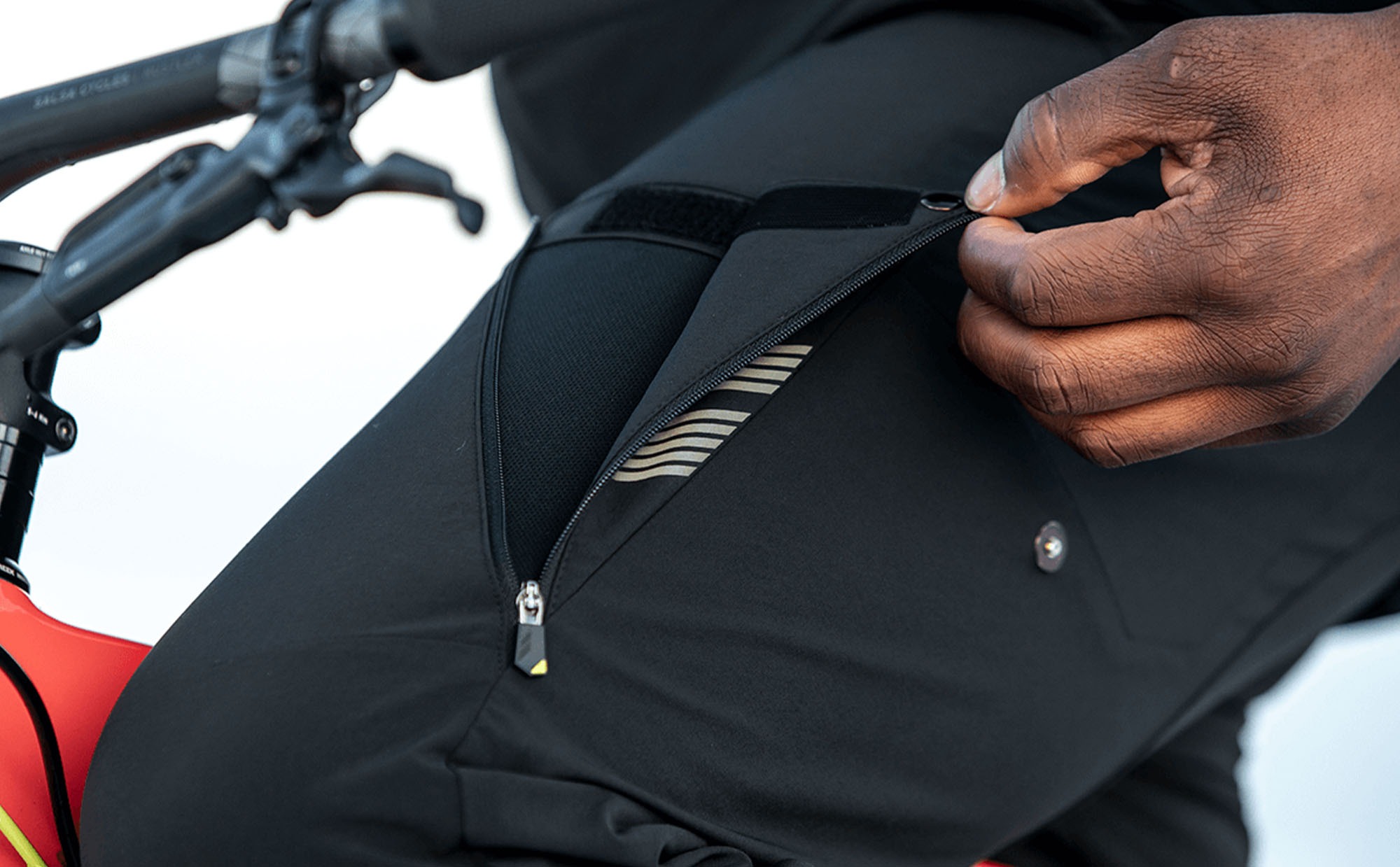
What are the benefits of having some shoulder season-specific pieces?
Laura: The most notable benefit of having shoulder-season pieces is that they make your riding season last so much longer. Fall and spring are some of the best times to be on your bike, and the right gear will keep you comfortable and ready for variable weather for one less thing to worry about when you’re out riding. Also, shoulder-season pieces can layer into your winter riding kit effortlessly, giving you three seasons of use.
Why is layering so important in the shoulder season? What tips do you have for layering?
Laura: Layering is important during the shoulder seasons because when you leave for your ride it might be chilly outside, but the sun could come out mid-ride and change the temperature drastically. The key to comfort is breathable, removable layers. If you look at most 45NRTH apparel and soft goods, you’ll notice a key material in many of the pieces is Merino wool. It’s a natural fiber that regulates temperature, breathes well, wicks sweat, and even blocks odor.
Another important tip is to consider your gear’s packability. When you do shed a layer, the ability to fold it up and stash it away is key to a light load. Remember that your body temperature will likely increase as you ride, so keep that in mind as you dress (and always check the weather forecast before you leave).
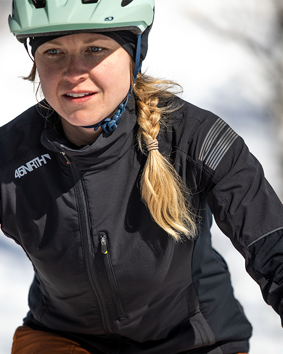
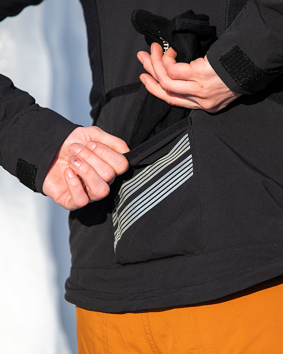
What are some headwear features riders should avoid?
Laura: I will assume that everyone is wearing their bike helmet, so my biggest tip is to make sure your head gear can comfortably fit under your helmet! Avoid anything too bulky and ensure that it covers your ears.
How about hands? What are some features that riders should look for in shoulder-season gloves?
Laura: Wind- and water-resistant gloves are a must in the shoulder seasons. Our Nøkken softshell glove blocks cold and wind. It also features a long cuff that cinches to fit perfectly with a long sleeve thermal jersey. I would also recommend looking for gloves that have AX Suede on the palms for grip control in wet conditions and extra comfort.
If you use a phone for navigation, check out the finger pads on your gloves to ensure they are compatible with touch screens. All 45NRTH gloves have this feature so you don’t have to pull your gloves off and blast your hands with cold air every time you need to use your phone.
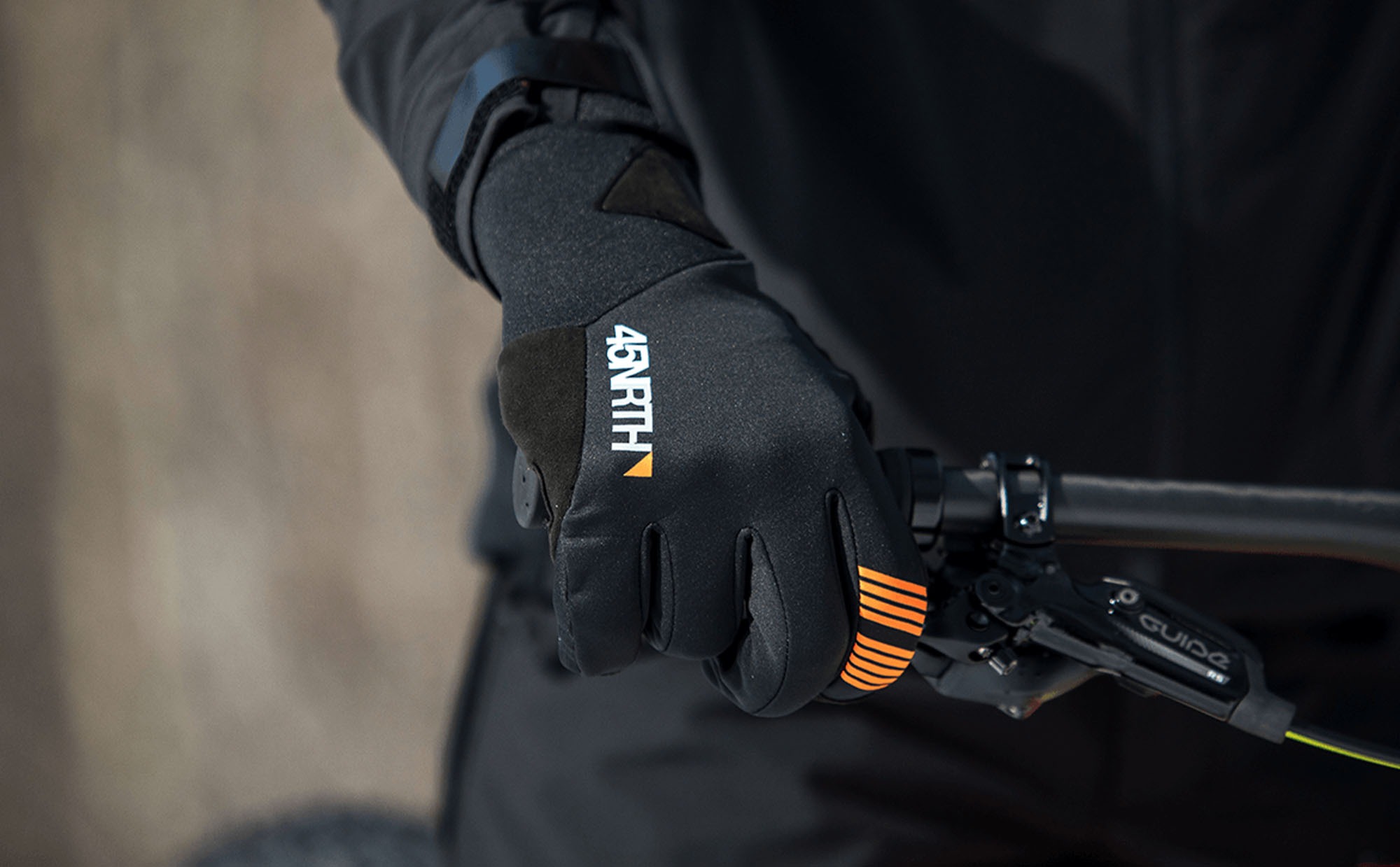
Does clothing strategy differ for road/gravel, mountain biking, or commuting?
Laura: Many apparel attributes can cross over to multiple types of rides, but there are a few considerations to keep in mind whether you’re commuting, mountain biking, or on a road/gravel ride. Regardless of your ride, I would encourage wind-resistant materials to keep the chill away from your skin, whether that is on your hands, ears, or legs. Also important for all types of shoulder-season riding are waterproof footwear and breathable materials.
That said, here are a few tips for clothing comfort on each type of ride:
- Road and gravel: Look for materials that have some stretch in them for comfort in your shoulders and a long drape in the back hem of your jersey/jacket for coverage. Because road and gravel cyclists typically prefer more fitted clothing, our Naughtvind bibs with the Ragnarök or Ragnarök Tall boots are a great fit.
- Mountain: Look for gear that is built tough, with articulated knees/elbows that can handle a mountain bike ride, like our Naughtvind Shell Pants. We also suggest a pair of our comfortable wool socks and Nøkken gloves before getting out there.
- Commuting: Visibility is important when commuting. When the sun rises late and sets early, high-visibility apparel with reflectivity is critical for safety. We incorporate reflectivity into all of our Naughtvind and footwear pieces. Also, don’t forget your lights!
Now you have the knowledge (and hopefully some of the gear) you need to extend your riding season. Just remember to keep it dry, breathable, packable, and layer-able. We hope to see you out there enjoying some extra ride time in the most underrated seasons of the year.
